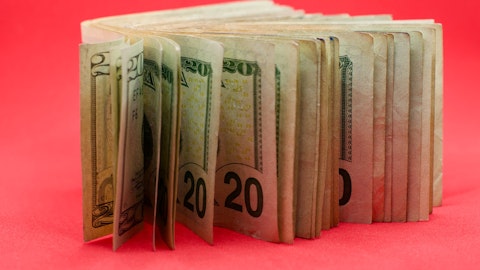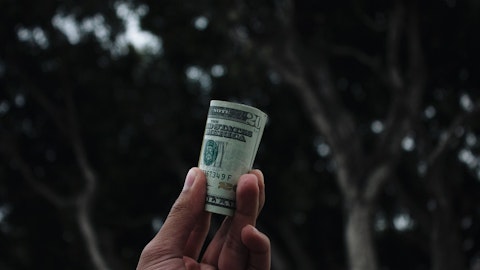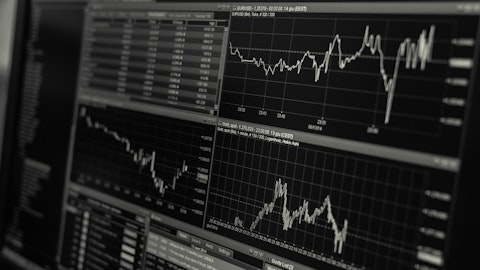JR Herlihy: Hey, Trevor. Thanks for the question. So I’d say, the timelines are different between commercial and residential. We do — in commercial, we have a couple of situations that we think will be a longer term process. We don’t have exact timelines on that, but call it more than a few quarters potentially. Whereas in residential, that we can work through delinquencies much more quickly. Maybe inside of a quarter in many cases. I would say that part of our motivation and owning part of Sheridan is to have a captive servicing platform with the resources and expertise to manage through work-outs like we’re underway with right now, including the capability to taking back and managing REO assets when necessary. We think there’s significant value there. I don’t know, Mark, if you have anything to add on the timeline of resolutions among commercial and residential?
Mark Tecotzky: For the commercial, it’s very project-specific. So as JR mentioned, the two that we are working out now is going to be longer term, like at least a couple of quarters. But I think it’s very three loan and project specific. So look, I think that the capabilities we have wherein it incentivizes us to be patient and to really maximize value. It’s not something we do a lot. We’ve been doing commercial bridge for EFC for a long, long time. And it used to be all workout situations. So I think we have a good handle on what it takes to maximize value for the shareholders, and that’s really what our focus is.
Trevor Cranston: Okay. Got it. That’s helpful. And then on the investment you guys have in Great Ajax, can you remind us if there’s any restrictions on that position or sort of maybe just generally talk about sort of your intentions and if you’re willing — and if you’re sort of free to potentially dispose of that anytime if and when you wanted to?
Laurence Penn: Yes, I can’t comment on that. Sorry.
Trevor Cranston: Okay. Fair enough. Thank you.
Laurence Penn: Thanks, Trevor.
Operator: The next question comes from Bose George with KBW.
Bose George: Hey, guys. Good afternoon. Just going back to the delinquencies, when you look at your pipeline, are there other loans that could potentially roll into that? And just can you talk about some of the drivers? Is it — are they the macro? Is it very sort of sponsor-specific in terms of stuff that’s happening?
JR Herlihy: Sure. So I’ll — I can start out, Mark. And I think they are generally in four categories. In commercial, we’ve talked about the few that we’re working through now. I don’t think there’s any other big looming headaches that we’re seeing right now, but there’s going to be noise and lumpiness in the portfolio I think quarter-to-quarter. But not seeing any big other headaches on the horizon besides the handful we’re working through. In non-QM, we had a transfer of servicing in September and October of our non-QM loans as the servicer we use was sold to a larger servicer. That servicing transfer caused delinquencies to tick-up in Q4, but we think those are temporary. And in fact, I think we put this stat in the prepared remarks, we’ve seen delinquencies come down by about a third between year-end and kind of today.
So that’s — I think that’s explained by the servicing transfer largely non-QM. And then in RTL, a lot of the — I guess the delinquencies initiatives we’ve worked through had been a function of the 2022 origination vintage when prices peaked in many of these markets in mid-2022. At this point, we’ve worked through I think three quarters or more of that vintage. So hopefully, that we’re seeing those trend down. But when we file the K later this week, you’ll see the — in our investment loans note in our financials we published 90-plus delinquency, you’ll see that in the numbers for those categories as well as in consumer. And Mark mentioned lower FICO borrowers have been underperforming and that’s been kind of a trend now for a few quarters, I would say.
Bose George: Okay, great. That’s helpful detail. Thanks. And then in terms of the portfolio, kind of the overall leverage, do you guys — are you sort of under-levered now with this — with the deal and the growth in equity? And is there kind of the way to think about the earnings contribution as you kind of lever more appropriately?
JR Herlihy: Yes. So that’s a big component here I think. We were 2x debt-to-equity — recourse debt-to-equity at year end. I think we can easily get into the 2.5x range, which would add on $1.5 billion the capital, another $700 million or $800 million of investments. In 2022, we were basically 2.5x to 2.6x levered recourse debt-to-equity leverage for most of the year. So we have liquidity on balance sheet, unencumbered assets as well as just additional borrowing capacity even on the assets that are encumbered, but lightly levered, our MSRs for example. So that’s certainly part of what we see driving ADE this year is adding leverage and investments.
Bose George: Okay, great. Thank you.
JR Herlihy: Thanks.
Operator: The next question comes from Lee Cooperman with Omega Family Office.
Lee Cooperman: Thank you. I actually have two questions and an observation. My questions are, you keep emphasizing a lot of dry powder. How long do you think it will take to restore the dividend back to where it was? Question one.
Laurence Penn: Well, that’s a great question. Hey, Lee. I don’t know. I can tell you, like I said, we’ve resized it so that we think we’re going to cover it pretty soon. I think what it would take is realistic is to even build a little book value back, but if you — which is another motivation for dropping the dividend a bit. So I…
Lee Cooperman: That doesn’t make any sense. You dropped the dividend to get the stock to go down?
Laurence Penn: No, no, no to just sort of rebuild book value. It’s a small contributor. But I think that right when you dividend out cash, that gives you less of a base to invest and earn your dividend, right? So it can be sort of a cycle. But I think that — I think let’s just take it one quarter at a time. We’re hoping later this year hopefully within a couple of quarters to be covering the new dividend. I think we’ve talked about all of the catalysts that can do that, Longbridge returning to profitability, getting our leverage up, our asset leverage up. We’re only at 2.0 on a debt to — debt leverage perspective. So that could help a tremendous amount. And look, we have built a little bit of a war chest of capital here because we think that the opportunities, especially in distressed commercial, are going to be so great.





